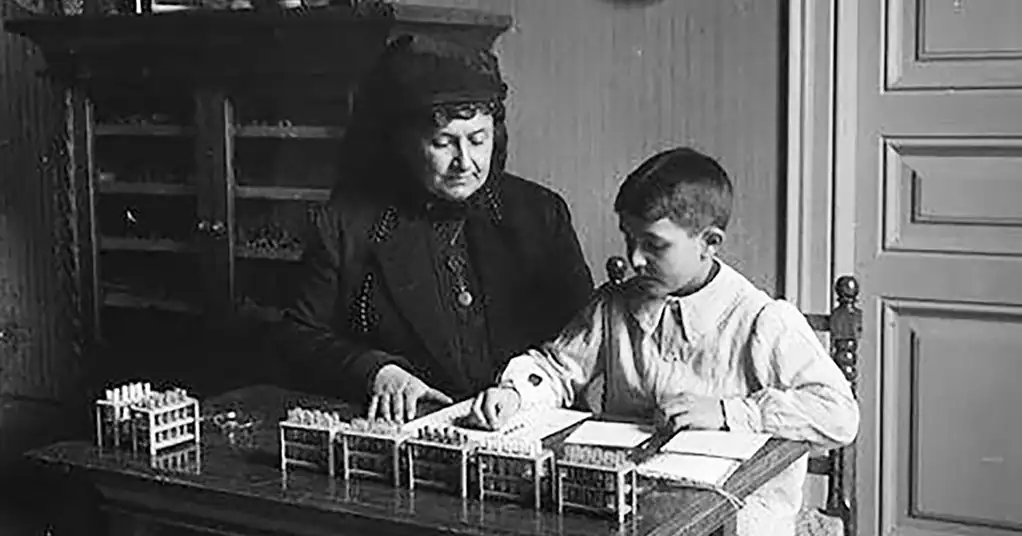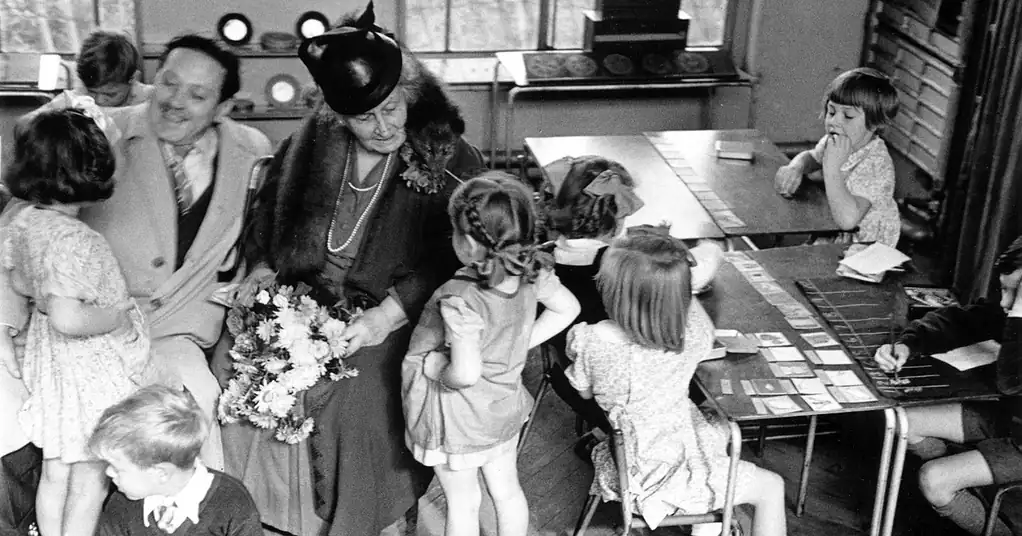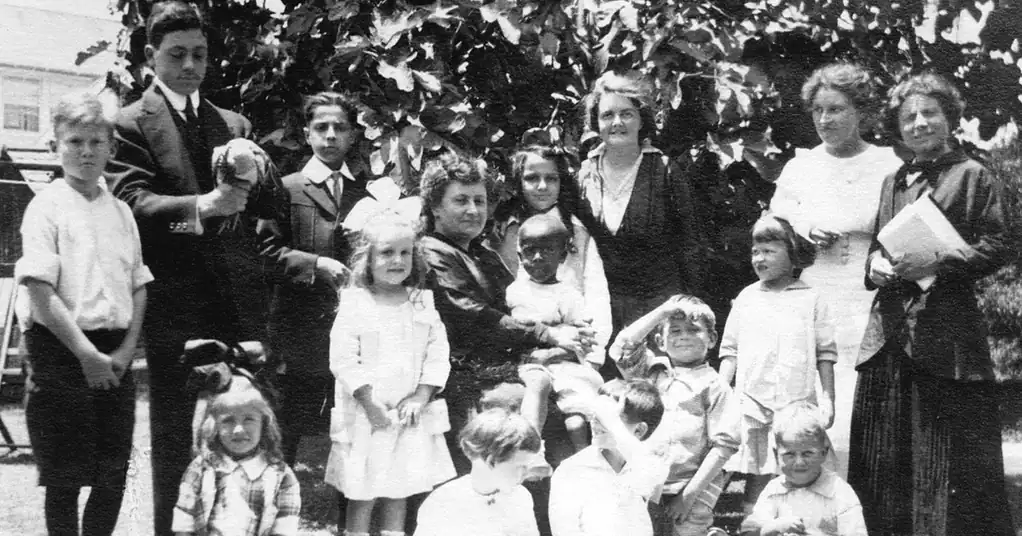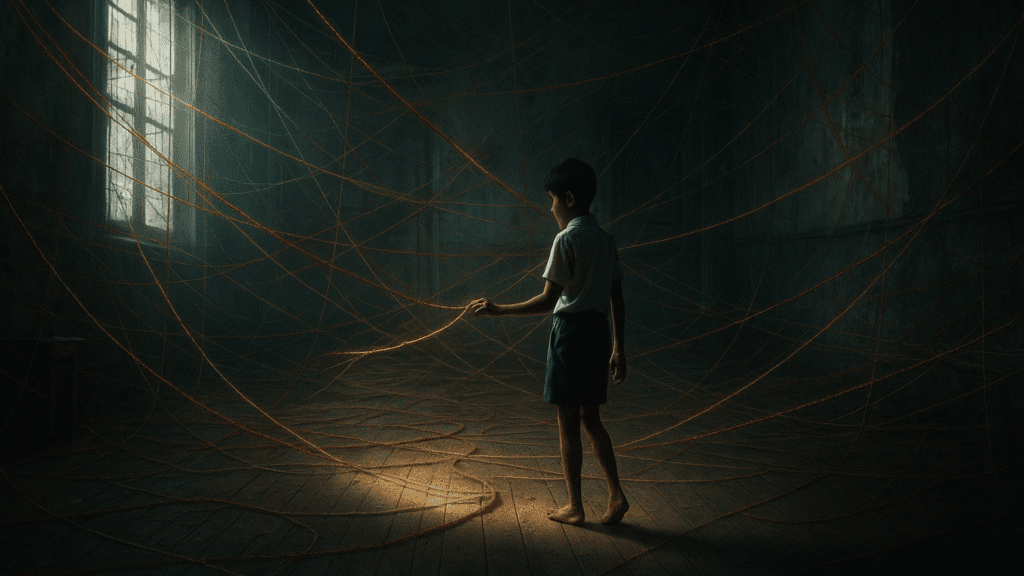Table of Contents
ToggleOn the 31st of August, we celebrate the birthday of Dr. Maria Montessori, a visionary whose groundbreaking work continues to transform how we understand child development. More than a century ago, Dr. Montessori observed children not as empty vessels to be filled, but as capable, curious beings whose development is best nurtured when the environment and the adults around them respect their natural growth.
At Ignite Global, we honor Dr. Montessori’s legacy by embedding her philosophy as one of the foundational pillars of the Child, Adolescent Development and Parenting (CADP) Coach Education Specialization, the world’s first ICF-accredited advanced coach education program of its kind. Like Montessori, CADP coaching places the developing brain of the child at the very center of every engagement. This isn’t about fixing the child; it’s about transforming the entire ecosystem that surrounds them, their caregivers, family culture, and educational environment.
Who Was Dr. Maria Montessori?
Dr. Maria Montessori (1870–1952) was Italy’s first female physician and one of the most influential educators of the 20th century. Through careful scientific observation, she developed an educational approach that recognized children as naturally eager for knowledge and capable of self-directed learning. Her methods emphasized freedom within structure, respect for individuality, and the creation of environments that support the child’s natural psychological, emotional, and intellectual growth.

Photo Credits: Association Montessori Internationale
How Montessori Differs from Traditional Education?
In traditional education, children are often passive recipients of knowledge, guided by rigid curricula and external expectations. Montessori turned this model upside down. She emphasized:
- Individualized learning over one-size-fits-all instruction.
- Hands-on exploration over rote memorization.
- Intrinsic motivation instead of external rewards and punishments.
- Observation and guidance rather than control and correction.
Where traditional education often asks, “How do we get the child to fit the system?” Montessori asks, “How do we create a system that fits the child?”
This question is at the very heart of CADP Coaching.
14 Montessori Principles in CADP Coaching
The CADP program integrates Montessori principles as reflective coaching tools, ensuring that when practitioners work with minors, they are always attuned to the rhythms of development and the relational ecosystem surrounding the child.
Here’s how:
1. Prepared Environment
In Montessori education, the prepared environment is more than just a tidy classroom with child-sized furniture. It is a carefully designed ecosystem where every element, the physical space, the materials, the order, the light, and even the role of the adult, is intentionally arranged to support the child’s natural drive to learn and develop independence. Nothing is accidental; everything is purposeful.
In CADP Coaching, this principle takes on a powerful relational dimension. While we may not set up a physical space, we prepare an emotional and psychological environment where the child feels safe, respected, and free to explore their own thoughts and feelings. The prepared environment in coaching is not about worksheets and tools, but about relational safety, structure, and attunement.
A prepared coaching environment includes:
- Consistency: Sessions have a rhythm, so the child knows what to expect. Predictability reduces anxiety and increases trust.
- Emotional Safety: The practitioner creates a non-judgmental space where all feelings are welcome, from excitement to frustration.
- Choice & Autonomy: Just as Montessori classrooms invite children to choose their activity, CADP practitioners offer children micro-choices that empower them to feel in control.
- Attuned Presence: The practitioner themselves is part of the environment. Their tone, pace, openness, and calm regulate the child’s nervous system and invite authentic expression.
Over time, the minor learns that this space is theirs: a place where their ideas, emotions, and individuality are not only accepted but celebrated. And just as the Montessori classroom invites exploration and independence, the CADP coaching environment invites self-reflection, emotional growth, and authentic self-expression.
When caregivers witness how a child flourishes in a prepared environment, they often begin to model it at home. They may set up calm, predictable routines, listen without interrupting, or create small “choice moments” for their child/adolescent. Slowly, the emotional climate of the home shifts, moving from control and chaos to structure, safety, and shared respect.
2. Sensitive Periods
Dr. Montessori observed that children pass through unique “sensitive periods”, windows of heightened receptivity when they are especially capable of absorbing specific skills or concepts with ease. For example, a child may show intense focus on learning language between birth and age six, or a fascination with order and routine during toddlerhood. During these windows, learning is joyful and almost effortless, whereas forcing the same skill outside the sensitive period often leads to frustration or resistance.
In CADP Coaching, recognizing sensitive periods is about meeting the child where they are developmentally, rather than where adults think they “should” be. Practitioners are trained to observe readiness signals and adapt the coaching engagement accordingly. Instead of applying pressure, CADP practitioners nurture what the child is already leaning toward, amplifying their natural curiosity and developmental growth.
A sensitive period in coaching may look like:
- For young children: A deep interest in independence (“I want to do it myself!”). The coach supports this by encouraging choice-making and self-expression rather than imposing answers.
- For pre-teens: Heightened social awareness and peer connection. A practitioner may guide them in reflecting on friendship dynamics and building emotional intelligence.
- For adolescents: A strong pull toward identity formation. Coaching conversations naturally lean into values, purpose, and self-discovery.
An example in CADP coaching:
A 7-year-old in coaching expresses constant curiosity about “why things happen the way they do.” Instead of steering the session toward rigid goal-setting, the coach leans into this sensitive period of inquiry by inviting reflective exploration: “That’s such an interesting question. What do you think happens when…?” This honors the child’s developmental window and strengthens their confidence in their own reasoning.
When caregivers learn about sensitive periods, they often shift from frustration (“Why is my child obsessed with repeating this one thing?”) to respect and encouragement (“This is a window of growth, how can I support it?”). This shift transforms the family climate from pressure and impatience to curiosity, attunement, and collaborative support. Children then feel celebrated for their natural rhythms instead of pushed into timelines that don’t fit their stage.
3. Absorbent Mind
One of Dr. Montessori’s most profound discoveries was the concept of the Absorbent Mind, the extraordinary ability of young children, especially from birth to age six, to effortlessly absorb information from their surroundings. Unlike adults, who learn through conscious effort, young children take in language, behaviors, attitudes, and emotional tones almost unconsciously, simply by existing within an environment.
This means that everything, from the way adults speak to each other, to the order of a room, to the emotional atmosphere of a household, leaves a deep imprint on the developing child. Montessori often said that during these years, the child’s mind is like a sponge, soaking up impressions that will later form the foundation of their personality and worldview.
In CADP Coaching, the principle of the Absorbent Mind reminds us that children are constantly internalizing far more than they can articulate. Practitioners understand that their tone of voice, posture, patience, and presence communicate just as powerfully as the questions they ask. What the child experiences in the coaching relationship becomes part of their internal model of how safe relationships feel.
Key applications in coaching include:
- Modeling calm and regulation: The practitioner’s steady presence becomes an anchor for the child’s nervous system.
- Non-verbal attunement: A warm smile, a gentle nod, or mindful silence communicates acceptance and safety.
- Awareness of micro-messages: The child absorbs not just encouragement but also subtle cues, impatience, distraction, or judgment. Practitioners are trained to bring deep awareness to their own state as part of the relational environment.
An example in CADP coaching:
A 6-year-old is restless during a session and struggles to stay seated. Instead of scolding or trying to force compliance, the practitioner mirrors calm energy, lowers their voice, and allows the child to stand or draw while talking. Over time, the child unconsciously absorbs the experience of being accepted and regulated without shame, an imprint that supports healthier self-regulation in the future.
When caregivers understand the Absorbent Mind, they begin to recognize that children learn more from what we are than from what we say. A parent who models patience, respect, and emotional honesty offers their child a blueprint for healthy relating. In families that integrate this principle, children absorb not only language and skills but also a climate of empathy, trust, and resilience that shapes their lifelong relationships.
4. Respect for the Child
For Dr. Montessori, respect for the child was not optional; it was the foundation of all meaningful development. She believed that children are not “adults in the making” to be controlled, corrected, or shaped, but whole human beings with dignity, rights, and inner wisdom at every stage of growth. To respect the child is to recognize their voice, their pace, and their perspective as valid and worthy of being honored.
This stands in sharp contrast to traditional systems, where children are often silenced, dismissed, or forced into compliance. Montessori’s radical idea was that when children are treated with deep respect, they flourish, emotionally, cognitively, and socially.
In CADP Coaching, respect for the child is expressed through:
- Listening without judgment: The practitioner treats the child’s words, emotions, and silences as meaningful data.
- Validation of inner experience: A practitioner doesn’t rush to correct, but instead acknowledges the child’s reality.
- Curiosity over correction: Instead of saying, “Don’t say that, of course you can make friends!” the practitioner might ask, “What makes it feel hard for you right now?”
- Equal partnership: The child is seen as the expert on their own life. The practitioner walks alongside them, rather than above them.
An example in CADP coaching:
A 10-year-old says, “I’m not good at making friends.” Instead of dismissing this or offering quick reassurance, the coach leans in with compassion:
“It sounds like making friends feels challenging for you right now. And, it is understandable. Can you tell me more about how you feel about it?”
By honoring the child’s perspective, the practitioner not only validates their feelings but also creates space for the child to reflect and discover their own solutions.
When caregivers learn to respect the child, family dynamics shift dramatically. Arguments decrease because children feel heard instead of dismissed. Power struggles soften into collaboration. A child who is respected develops self-respect, which becomes the foundation for resilience and healthy relationships. Over time, families who practice this principle cultivate a home atmosphere where every member’s voice matters, emotional safety is prioritized, and dignity is shared.
5. Freedom Within Limits
One of Montessori’s most balanced principles is freedom within limits. She recognized that children thrive when given the freedom to explore, make choices, and follow their interests, but that this freedom must exist within gentle, clear boundaries that provide safety and structure. Without limits, freedom becomes overwhelming or unsafe; without freedom, limits become oppressive. True growth happens in the space between.
In CADP Coaching, this principle translates into a framework where children are encouraged to explore their autonomy, but always within a relational container that feels safe and consistent. Practitioners allow the child to lead, while quietly holding boundaries that maintain focus and emotional security.
Key applications in coaching:
- Choice-making: Children may decide how to engage (drawing, talking, role play), but the practitioner sets the structure of time and purpose.
- Safe expression: A child is free to express any feeling, but not to harm themselves or others in the process.
- Exploration with guidance: The child can choose the session goals, but the practitioner ensures they remain developmentally appropriate.
An example in CADP coaching:
During a session, a 12-year-old is excitedly talking about video games. Instead of shutting this down, the practitioner leans into the freedom of choice by asking reflective questions: “What do you like most about that game? How does it feel to play with your friends online? Do you notice anything similar in real life?” The practitioner honors the child’s interest but gently sets limits by redirecting the conversation toward self-reflection and relational skills.
When caregivers adopt the principle of freedom within limits, home life transforms. Instead of strict control or complete permissiveness, parents strike a healthy balance. For instance, a child may choose what book to read before bed (freedom), but the bedtime itself remains consistent (limit). This combination nurtures autonomy while ensuring the child feels securely held by family rhythms. Over time, children raised in such an environment grow into adults who know how to navigate freedom responsibly, respecting both their own needs and the boundaries of others.
6. Independence
Dr. Montessori believed that the ultimate goal of education was not dependence on the adult, but independence of the child. From the earliest stages of development, she emphasized giving children opportunities to do things for themselves, from pouring their own water to choosing their own work. Independence, she argued, builds confidence, responsibility, and a strong sense of self.
In CADP Coaching, independence means guiding children and adolescents to trust their own thinking, choices, and capabilities. The practitioner does not solve problems for them or dictate solutions; instead, the practitioner offers a supportive presence that encourages the child to discover their own answers. This builds self-efficacy, the belief that “I can do this”, which is critical for healthy development and resilience.
Applications in CADP Coaching:
- Encouraging decision-making: Children are invited to set their own micro-goals for sessions.
- Building problem-solving skills: Instead of offering advice, the practitioner asks questions that spark reflection: “What do you think would happen if…?”
- Supporting responsibility: Children learn to take ownership of their progress and celebrate their own successes.
An example in CADP coaching:
An 11-year-old says, “I don’t know how to solve this fight with my friend.” Instead of telling them what to say, the practitioner might ask: “What are some ways you could start the conversation? Which feels most like you?” By exploring possibilities and choosing their own path, the child practices independence in a safe, supported context.
When caregivers embrace this principle, they shift from doing for the child to doing with the child. Instead of tying the shoes for a 6-year-old who struggles, they patiently encourage practice and celebrate small victories. Instead of deciding all extracurriculars for a teen, they invite the teen’s input and honor their preferences. This family culture fosters confidence, accountability, and resilience, empowering children to grow into adults who trust themselves and contribute meaningfully to their communities.
7. Educating the Whole Child
Dr. Montessori believed that education was never just about academics. True development, she argued, must consider the whole child, their cognitive, emotional, physical, social, and even spiritual growth. She saw the child not as a student in isolation, but as a human being in formation, whose sense of identity, belonging, and purpose was just as important as reading, writing, or arithmetic.
In CADP Coaching, this principle is brought to life by placing equal emphasis on the child’s mind, body, emotions, and relationships. A coaching session is not limited to problem-solving or skill-building; it’s a space where the child’s inner world, family context, developmental stage, and relational environment are all acknowledged and supported.
Applications in CADP Coaching:
- Mind: Encouraging reflection, self-awareness, and goal setting that is age-appropriate.
- Body: Using embodied practices like drawing, role play, or movement to help children process emotions.
- Emotions: Creating space for children to name, explore, and regulate their feelings.
- Relationships: Exploring dynamics with family, peers, and teachers to strengthen relational intelligence.
An example in CADP coaching:
A 13-year-old who struggles with anxiety before exams is not coached only on study strategies (mind). Instead, the practitioner also explores physical grounding techniques (body), validates and works with the fear (emotions), and helps the child practice communicating their needs to parents and teachers (relationships). The child leaves the session with not just an academic plan, but also tools for resilience, confidence, and relational growth.
When caregivers see the child as a “whole person” rather than a grade or a behavior, family culture transforms. Instead of asking only, “How was your test?” parents begin to ask, “How did you feel about today? Who did you connect with? What felt meaningful to you?” This subtle shift nurtures children who feel valued for who they are, not just for what they achieve. Over time, homes become ecosystems that foster emotional intelligence, relational warmth, and a deep sense of self-worth.

Photo Credits: Association Montessori Internationale
8. Individualized Learning
Dr. Montessori was one of the first to insist that every child’s developmental path is unique. She noticed that when children were given the freedom to choose activities aligned with their interests and pace, they flourished. When they were forced into rigid, uniform instruction, many disengaged or struggled. This insight laid the foundation for individualized learning, a principle that honors the child as a unique learner, not a standard product of the system.
In CADP Coaching, individualized learning is at the core of the practice. No two children, adolescents, or families are the same, so coaching strategies are always personalized rather than prescriptive. The practitioner pays close attention to developmental stage, temperament, cultural context, family dynamics, and learning style to design a coaching approach that fits the child, instead of forcing the child to fit the approach.
Applications in CADP Coaching:
- Pacing sessions: Some children may need longer reflection time, while others thrive in active, playful exploration.
- Tailoring techniques: A child who loves art may process emotions through drawing, while another prefers verbal storytelling or role play.
- Respecting development: A 7-year-old and a 15-year-old will have very different capacities for goal setting, reflection, and emotional expression; the practitioner adapts accordingly.
- Family involvement: Strategies are adjusted to fit the caregiver’s style and resources so the whole system can support the child.
An example in CADP coaching:
Two children come to coaching for “low confidence.” For one, the practitioner integrates journaling and guided reflection because the child is introspective and enjoys writing. For the other, the coach uses role play and movement because the child is kinesthetic and expressive. Both children work on the same developmental theme, but through tailored pathways that fit their individuality.
When caregivers internalize individualized learning, they stop comparing siblings or measuring their child against peers. Instead of saying, “Your brother could do this at your age,” they ask, “What does support look like for you right now?” This reduces shame, builds trust, and creates a home where uniqueness is celebrated. Over time, families become attuned ecosystems that cultivate each child’s potential, rather than imposing uniform expectations.
9. Intrinsic Motivation
Dr. Montessori observed that children are naturally driven to learn, explore, and master new skills, not because of external rewards, but because of an inner drive toward growth. She noticed that when children were praised excessively, bribed, or punished, their learning became dependent on external approval. But when they were trusted and given the right environment, their intrinsic motivation, curiosity, joy of discovery, and satisfaction in mastery flourished.
In CADP Coaching, this principle is foundational. The practitioner’s role is not to hand out gold stars or quick reassurances but to help children connect with their own sense of purpose, effort, and meaning. By shifting the focus from outcomes (grades, trophies, or praise) to processes (effort, persistence, learning), children develop self-motivation that sustains them well beyond coaching.
Applications in CADP Coaching:
- Celebrating effort, not just results: “I noticed how much focus you put into finishing that story,” instead of “Great job, you’re so smart!”
- Inviting curiosity: Encouraging questions and exploration rather than providing ready-made answers.
- Connecting to personal meaning: Helping children see why a goal matters to them, not just to parents or teachers.
- Encouraging reflection: Asking, “How did it feel to do that on your own?” so children notice their own pride and satisfaction.
An example in CADP coaching:
A 9-year-old shares that they built a Lego tower that kept falling over until they finally made it stand. Instead of simply saying, “Well done!” the practitioner responds, “Wow, you kept trying different ways until it worked. What do you think helped you not give up?” This shifts the focus from external validation to self-awareness of persistence, strengthening intrinsic motivation.
When caregivers understand intrinsic motivation, they often begin to move away from constant praise, rewards, or punishments. Instead, they notice and reflect the child’s effort, resilience, and growth. A parent might say, “I saw how carefully you practiced the piano today,” rather than, “Good job, you played perfectly.” Over time, this creates a home culture where children are motivated by curiosity, mastery, and meaning, not fear of punishment or dependency on praise.
10. Observation
For Dr. Montessori, observation was the cornerstone of understanding the child. Rather than assuming or imposing, Montessori educators were trained to quietly and attentively observe, noticing patterns of interest, stages of development, and subtle signs of readiness. Through this patient practice, the adult could respond to the child’s true needs rather than preconceived ideas or external pressures.
In CADP Coaching, observation is more than watching with the eyes; it is attunement with the whole self. Practitioners are trained to notice not only what a child says, but also what they do not say. This includes shifts in body language, tone, energy, breathing patterns, or even the silence between words. Such subtle observations often reveal more about the child’s inner world than direct statements.
Applications in CADP Coaching:
- Reading non-verbal cues: A child’s slumped posture may signal discouragement, while brightened eyes may show emerging excitement.
- Tracking energy shifts: A sudden quiet moment may indicate deeper reflection or emotional discomfort that needs gentle exploration.
- Observing relational patterns: Practitioners notice how children interact with them, as these patterns often mirror dynamics at home or school.
- Using observation as intervention: Sometimes simply reflecting what is observed (“I notice your voice got softer when you said that”) creates a breakthrough moment for the child.
An example in CADP coaching:
A 14-year-old says confidently, “I don’t care what my friends think,” but the practitioner notices their eyes drop and shoulders tense. Instead of accepting the words at face value, the practitioner gently reflects: “I noticed you looked down when you said that. What was happening for you in that moment?” This observation opens a doorway for the teen to share hidden vulnerability.
When caregivers embrace observation, they begin to shift from reacting to truly seeing their child. Instead of jumping to correction (“Stop slouching!”), They may notice patterns (“You seem to get quiet whenever we talk about school. I wonder what’s happening inside for you?”). This creates a family climate of curiosity, empathy, and responsiveness, where children feel understood instead of judged. Over time, observation transforms parenting from control into connection.
11. The Role of the Educator (CADP Practitioner)
Dr. Montessori redefined the role of the adult in education. Instead of the teacher as an authority figure who dictates and directs, she envisioned the adult as a guide, observer, and facilitator. The adult’s task was not to impose learning, but to prepare the environment, observe the child’s needs, and step in only when necessary, gently pointing the way without interrupting the child’s natural process of discovery.
In CADP Coaching, the practitioner embodies this same philosophy. The practitioner is not the “expert” who gives advice, fixes problems, or dictates outcomes. Instead, the coach is a partner in the child’s journey, holding space, asking reflective questions, and guiding the child toward self-awareness and self-discovery. The practitioner walks alongside the child, never above them.
Applications in CADP Coaching:
- Holding space: Creating a safe and consistent container for the child’s exploration.
- Asking reflective questions: Rather than telling the child what to do, the coach invites them to think, feel, and choose.
- Facilitating growth: Providing gentle structure but allowing the child to take the lead in direction and pace.
- Modeling partnership: Demonstrating that relationships can be based on collaboration and respect, not control.
An example in CADP coaching:
A 12-year-old says, “I don’t want to do my homework, it’s boring.” Instead of lecturing about responsibility, the practitioner might ask, “What makes it feel boring? Is there a way you’d like to approach it differently?” This approach guides the child into reflection and ownership, instead of compliance or resistance.
When caregivers shift from being controllers to guides, family culture transforms. Instead of saying, “Because I said so,” parents begin to ask, “What do you think would help you handle this?” Authority gives way to partnership. Children raised in this climate learn that adults can be supportive allies rather than authoritarian enforcers. This fosters trust, open communication, and a sense of safety that strengthens the parent-child bond.
12. Follow the Child
Perhaps the most famous and revolutionary of Dr. Montessori’s principles is “Follow the Child.” She believed that each child carries within them a natural blueprint for development, a drive toward growth that unfolds best when the adult observes, respects, and supports rather than controls. To follow the child means to honor their unique pace, interests, and developmental needs instead of imposing external agendas.
In CADP Coaching, following the child is about recognizing that the child is not a passive participant but the true leader of the coaching process. While the practitioner provides structure and guidance, the child’s voice, passions, and readiness determine the direction. The practitioner’s role is to listen deeply, attune, and adapt, creating space for the child to grow into themselves rather than into someone else’s expectations.
Applications in CADP Coaching:
- Centering the child’s interests: Incorporating passions (art, music, sports, stories) as pathways into deeper reflection and growth.
- Honoring pace: Allowing children to linger where they need, instead of rushing them toward outcomes.
- Trusting developmental readiness: Recognizing that insights and skills emerge when the child is ready, not when adults demand it.
- Empowering voice: Giving children ownership over session goals, topics, and processes.
An example in CADP coaching:
A 15-year-old who loves music struggles with expressing emotions verbally. Instead of forcing talk-based reflection, the practitioner integrates songwriting into sessions, inviting the teen to write lyrics about what they’re feeling. This not only honors the child’s passion but also creates a powerful, authentic channel for self-expression and healing.
When caregivers adopt Follow the Child, home life shifts from constant direction to intentional listening. Instead of saying, “You should be doing this,” parents begin to ask, “What feels important to you right now?” Children sense that their voice matters, their passions are valued, and their journey is trusted. This nurtures confidence, strengthens bonds, and creates a family culture where individuality is celebrated and supported.
13. Hands-On Learning
Dr. Montessori firmly believed that children learn best by doing. She observed that abstract lectures or rote memorization were far less effective than direct, hands-on experiences. In her classrooms, children manipulated objects, experimented, and engaged their senses, learning mathematics through beads, language through movable letters, and science through direct observation of nature. For Montessori, the hand was not separate from the mind; it was the instrument of intelligence.
In CADP Coaching, this principle comes alive through experiential and creative techniques. Children and adolescents are not expected to only talk about their thoughts and feelings. Instead, they are encouraged to engage their bodies, senses, and imagination as active participants in the learning and reflective process. By “doing,” they integrate insights more deeply and find concrete ways to process their inner experiences.
Applications in CADP Coaching:
- Art-based exploration: Drawing, painting, or doodling to express emotions or map goals.
- Role play: Acting out scenarios with peers, family, or self to explore perspectives and practice skills.
- Storytelling: Creating stories, metaphors, or characters to reflect inner struggles and strengths.
- Movement-based reflection: Using posture, gestures, or simple physical activities to embody emotions or shifts.
An example in CADP coaching:
A 9-year-old struggles to articulate feelings of anger toward a sibling. The practitioner invites them to draw what their “anger cloud” looks like. As the child sketches a fiery creature, the practitioner asks, “What does this cloud want to say? How can you calm it down?” Through this hands-on activity, the child externalizes and reflects on their emotions in a safe, concrete way that talking alone may not have achieved.
When caregivers see the power of hands-on learning, they often begin to incorporate more experiential approaches at home. Instead of only asking, “What did you learn at school?” they might invite the child to show them, act it out, or create something. Over time, family culture shifts from purely verbal or evaluative to playful, creative, and embodied, deepening emotional connection and making learning a shared experience.
14. Principle of Auto Learning (Self-Directed Learning)
At the heart of Montessori philosophy lies a profound trust in the child’s inner teacher. Dr. Montessori believed that children are naturally inclined to learn and grow when given the right conditions, curiosity, independence, and the freedom to explore. She called this the principle of auto-education or auto learning, where the child is not a passive recipient of knowledge but an active creator of their own understanding.
In CADP Coaching, this principle translates into fostering self-reflection, self-awareness, and self-discovery. Rather than giving answers or imposing solutions, the practitioner trusts the child’s capacity to find their own insights when guided with thoughtful questions and a safe space. This doesn’t mean leaving the child without support; it means believing in their competence and gently facilitating their journey toward ownership.
Applications in CADP Coaching:
- Empowering discovery: Asking open-ended questions that spark the child’s own insights.
- Encouraging reflection: Allowing silence and pauses so the child can process internally rather than being rushed.
- Supporting ownership: Helping children articulate their own goals, strategies, and solutions instead of adopting adult-driven agendas.
- Strengthening self-trust: Validating that the child’s thoughts, feelings, and discoveries are valuable and worthy of respect.
An example in CADP coaching:
A 13-year-old is struggling with managing peer pressure. Instead of telling them what to do, the practitioner asks: “What feels important to you in this situation? What choice would make you proud of yourself?” When the child identifies their own value-based decision, they leave the session with a sense of ownership and empowerment, far stronger than if the solution had been handed to them.
When caregivers embrace self-directed learning, they shift from solving every problem for their child to encouraging them to think, reflect, and decide. Instead of saying, “Here’s what you should do,” they might ask, “What do you think would help here?” Over time, this nurtures children who are confident, resourceful, and resilient, young people who trust themselves and are better prepared to navigate life’s complexities.

Photo Credits: Association Montessori Internationale
Transforming Families and Caregiver Involvement
Montessori education does not stop at the classroom door, and neither does CADP coaching. When parents and caregivers embrace these principles, family culture and emotional climate shift dramatically:
- Homes become prepared environments where children feel safe to explore and express.
- Parents begin to respect and follow the child, replacing control with collaboration.
- Emotional climates warm as caregivers learn to observe rather than react, listen rather than lecture.
CADP coaching teaches caregivers to integrate these principles into daily life, creating ripple effects of trust, connection, and empowerment that extend far beyond the coaching session.
Why This Matters
In a world where children face unprecedented pressures, Montessori’s philosophy offers timeless wisdom: see the child, respect the child, follow the child. At Ignite Global, we carry this wisdom forward through CADP coaching, ensuring that every interaction, whether with a child, parent, or educator, honors the developing brain and nurtures human potential, remembering that a child is like an acorn, destined to grow into a magnificent Oak tree, carrying its full potential within.

In Closing…
As we honor Dr. Maria Montessori’s birthday, we celebrate not only her legacy but also the enduring truth she uncovered: that children flourish when seen, respected, and supported as whole human beings. At Ignite Global, we continue this work by embedding Montessori’s principles into CADP Coaching, nurturing environments where children can grow into their fullest potential, and where families and communities transform alongside them.
In Dr. Montessori’s own words:
“The greatest development is achieved during the first years of life, and therefore, the greatest care should be taken to provide the child with an environment that will enable him to develop freely.”
Her wisdom reminds us that every child carries within them the promise of humanity’s future. Our responsibility, as practitioners, caregivers, and educators, is to prepare the soil, nurture the roots, and trust the unfolding of the oak tree within the acorn.
Happy Birthday, Dr. Montessori. May your vision continue to inspire generations to see the child, respect the child, and follow the child.
With grace and gratitude,
Lux Hettiyadura
Directress, Child/Adolescent Development & Parenting Coach Education – Ignite Global
References
Montessori, M. (1967). The Absorbent Mind. New York: Holt, Rinehart and Winston.
Montessori, M. (1967). The Discovery of the Child. New York: Ballantine Books.
Montessori, M. (1969). The Secret of Childhood. New York: Ballantine Books.
Montessori, M. (1995). The Advanced Montessori Method. Oxford: Clio Press.
Montessori, M. (1997). The Montessori Method. New York: Schocken Books.
Standing, E.M. (1957). Maria Montessori: Her Life and Work. New York: Plume.
Lillard, A.S. (2017). Montessori: The Science Behind the Genius. 3rd ed. New York: Oxford University Press.
Kramer, R. (1976). Maria Montessori: A Biography. New York: Putnam Publishing.
Feez, S. (2010). Montessori and Early Childhood. London: SAGE Publications.













What a lovely reflection on Dr. Montessori, and how her work lives on in thoughtful modern coaching of children and their parents.